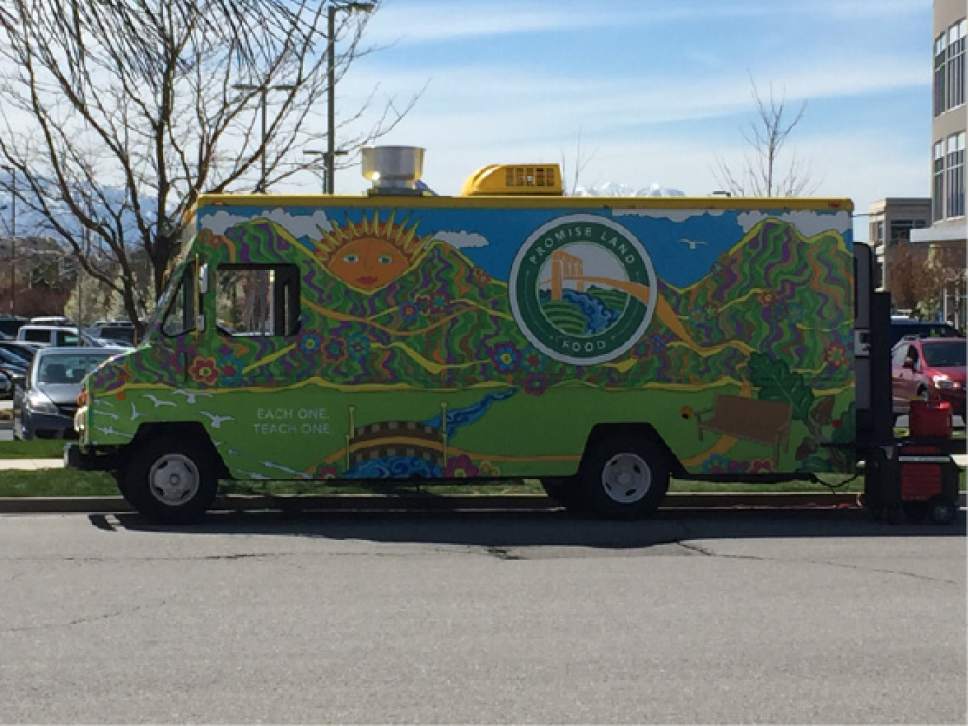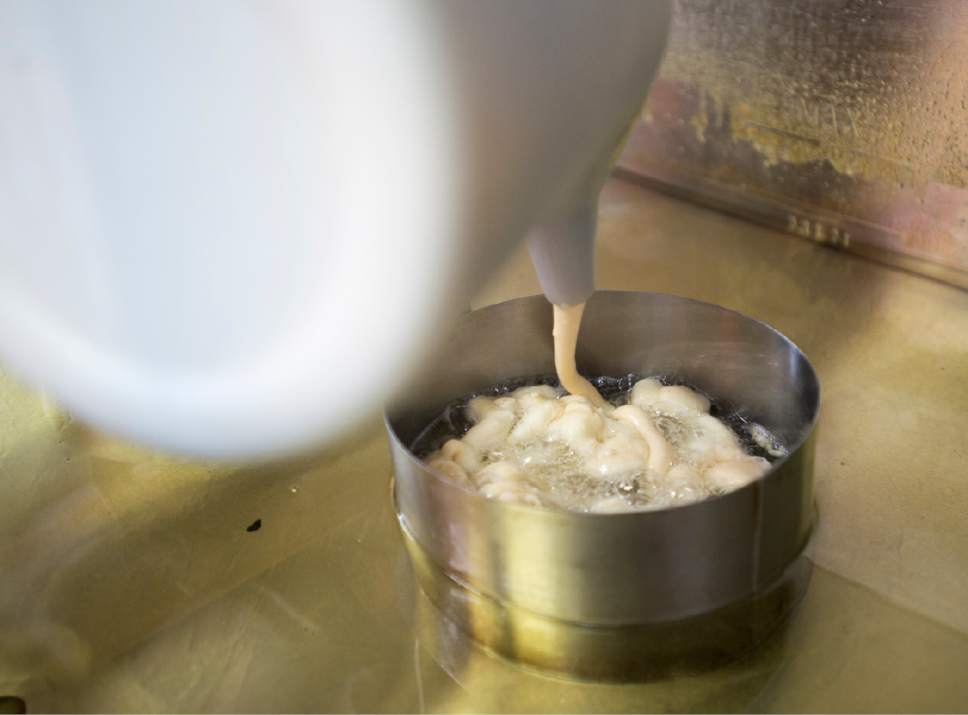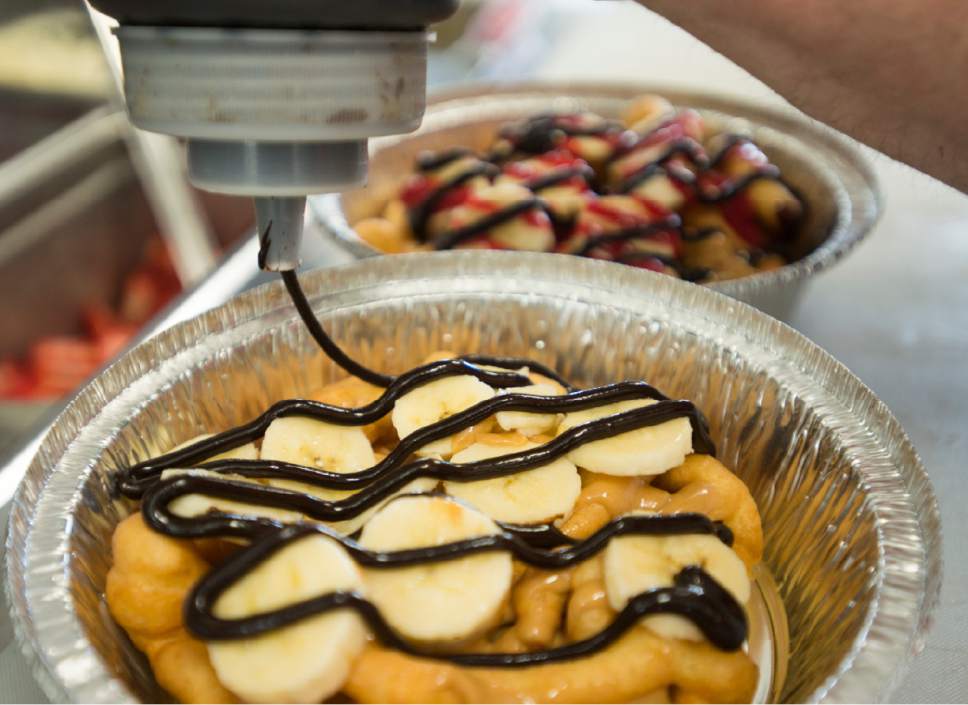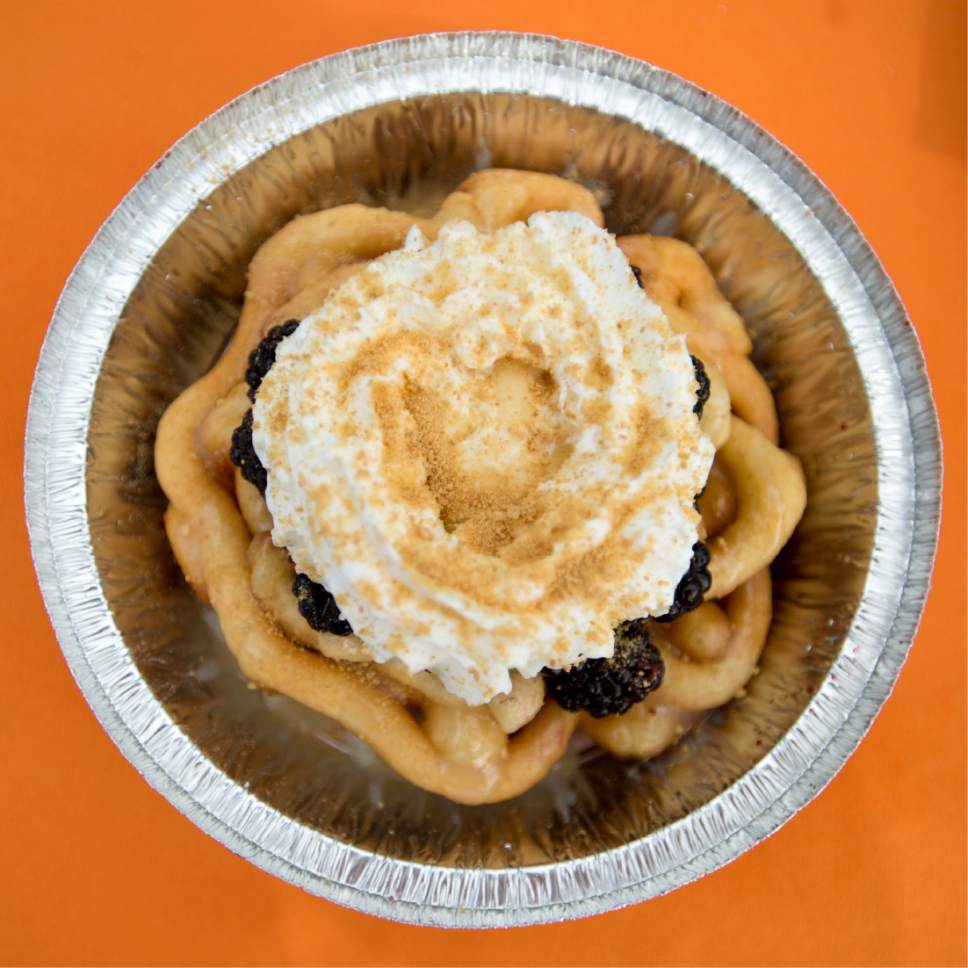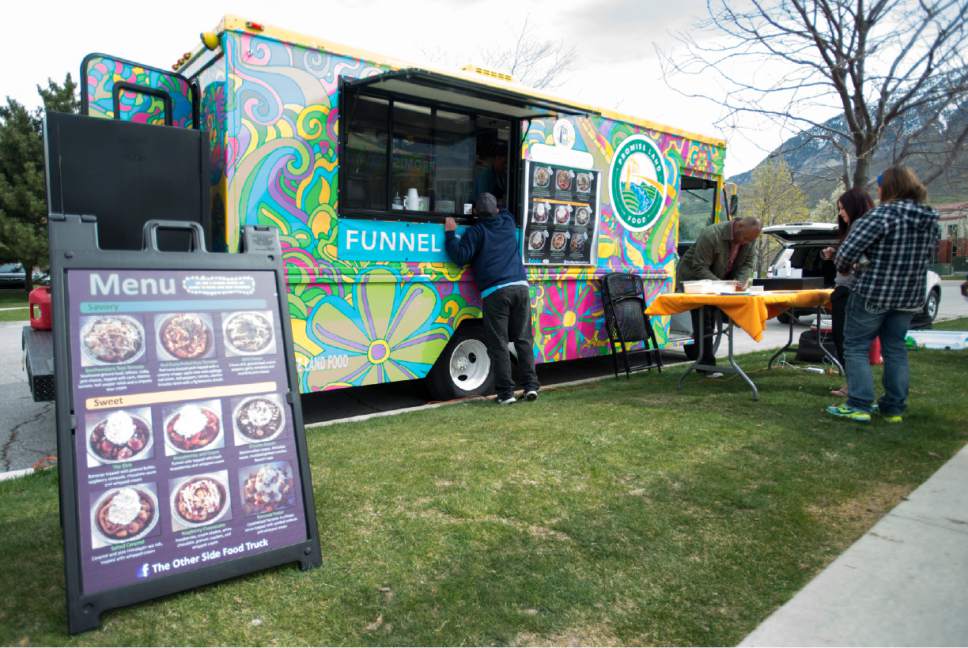This is an archived article that was published on sltrib.com in 2017, and information in the article may be outdated. It is provided only for personal research purposes and may not be reprinted.
The Other Side Food Truck serves sweet and savory funnel cakes with a generous side of hope and second chances.
The mobile food business, based in Salt Lake City, is operated by The Other Side Academy, a nonprofit residential living and vocational school whose students have previously "hit rock bottom" through drug addiction, criminal behavior or homelessness, said food-truck director Moe Egan. "They come to school to learn new life skills and get to 'the other side.'"
Launched last fall, the food truck is easily recognizable with its colorful 1970s-looking exterior that includes an orange and yellow sun rising over green and purple mountain peaks.
It sells a variety of funnel cakes and toppings, from the traditional with powdered sugar to strawberries and cream, peanut butter s'mores or salted caramel. Savory options include the Southwestern taco, with seasoned ground beef, lettuce and cheese, and the red curry pulled pork, with cream vinegar apple and cabbage slaw. Prices range from $5.99 to $8.99.
Egan said the truck eventually hopes to start serving breakfast with bacon and eggs or fried chicken — à la chicken and waffles. "Versatility is one of the reasons we selected funnel cakes," he said.
The truck parks at various places across the Wasatch Front, from downtown Salt Lake City and West Valley City to Midvale and Provo. Find the schedule at facebook.com/OtherSideFoodTruck/ .
Customers like Matt Bingham, who works in Provo, are drawn to the truck when they smell the aroma of deep-fried dough wafting from its small kitchen. But they return to support the students.
"After I heard the story behind the food truck, it made me prone to come out again," Bingham said last week. "I like supporting a good cause. And getting good food out of it is an added bonus."
The Food Truck is one of four revenue-generating businesses — along with a moving service, window cleaning and lawn care — that The Other Side Academy operates to cover program expenses. The school, in the historic Armstrong Mansion at 667 E. 100 South in downtown Salt Lake City, receives no state or federal dollars. Students pay nothing if they are willing to make a minimum two-year commitment to education and personal change.
"We're looking for people who are desperate to save their lives and want to change," Egan said. "It can't be a parent or friend asking. It has to be the person saying 'I need help.' "
The Other Side Academy, which opened in 2015, currently has 60 students — 47 men and 13 women. The most tenured student has been with the program 18 months, so the first official graduation will take place later this year.
For 33-year-old Guy, The Other Side Academy represents "my ninth or 10th chance." (The Other Side asked that students' last names be withheld.) A drug addict, he has been in and out of jail and recovery programs numerous times. "I actually did really well in rehab and would complete the programs," he said. Inevitably, though, he would relapse."I wanted something different, but didn't know how to do it."
He expected change to be this "big thing" but has learned "it's just living day to day and getting support from my peers," he said.
Working on the food truck gives him a chance to interact with the public and share his experiences. "The food is excellent," he said. "But the story that goes along with it is what sets us apart."
The Other Side Academy is modeled after the successful Delancey Street Foundation, a program in various U.S. cities including San Francisco, Los Angles and New York. In both programs, student live in dorm-style rooms and share a common kitchen and dining room. The Other Side staff, who are all graduates and former leaders of Delancey, also live on site 24 hours a day, seven days a week.
A typical day starts at 6 a.m. with meetings and breakfast. Teams work until lunch, followed by a daily seminar, and then back to work until 5 p.m. After dinner, many work on finishing their high-school diplomas or GED certificates or they attend group sessions to work on issues that arise during the workday. Lights are out by 11 p.m.
"Throughout the day, the real person comes out. One of us hears it or sees it and we will call you out," said Egan, who went through the Delancey program. But then the next day, "you go back and try again."
During the first few months at The Other Side Academy, student jobs include cleaning and maintaining the facility and serving meals to the other participants. When ready, they graduate to the next phase, where they can work in one of the vocation programs.
The whole program operates under the mantra "each one teach one," being supported by those who have come before and helping those who come after. That kind of thinking has helped Ryan, another student recovering from addiction and working on the food truck.
"This is really saving my life," he said. "Helping other people and learning not to be selfish."


